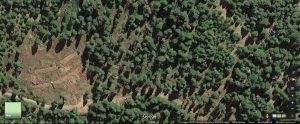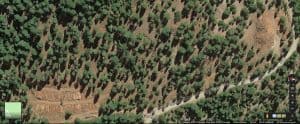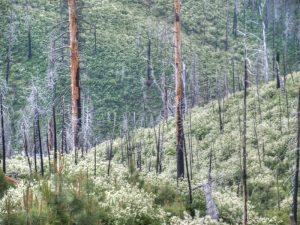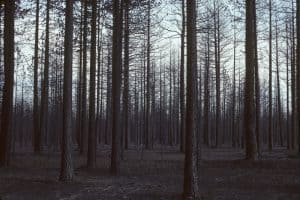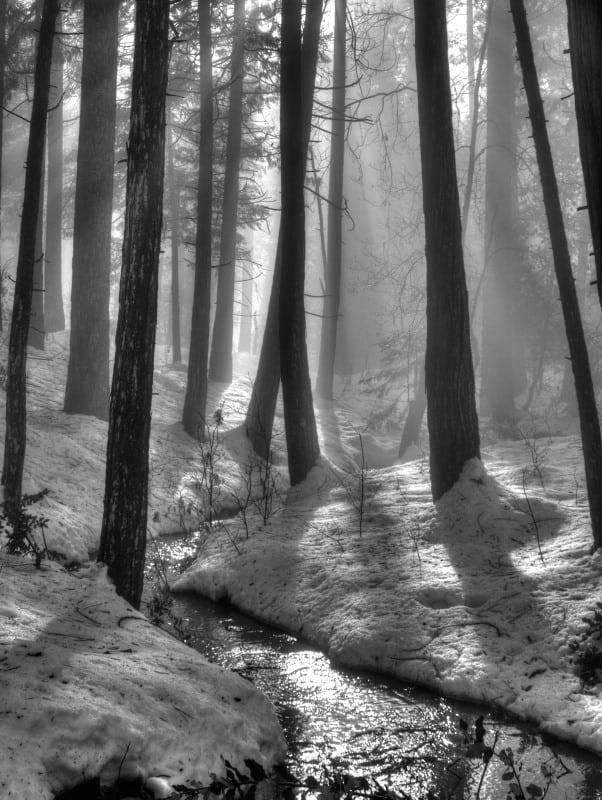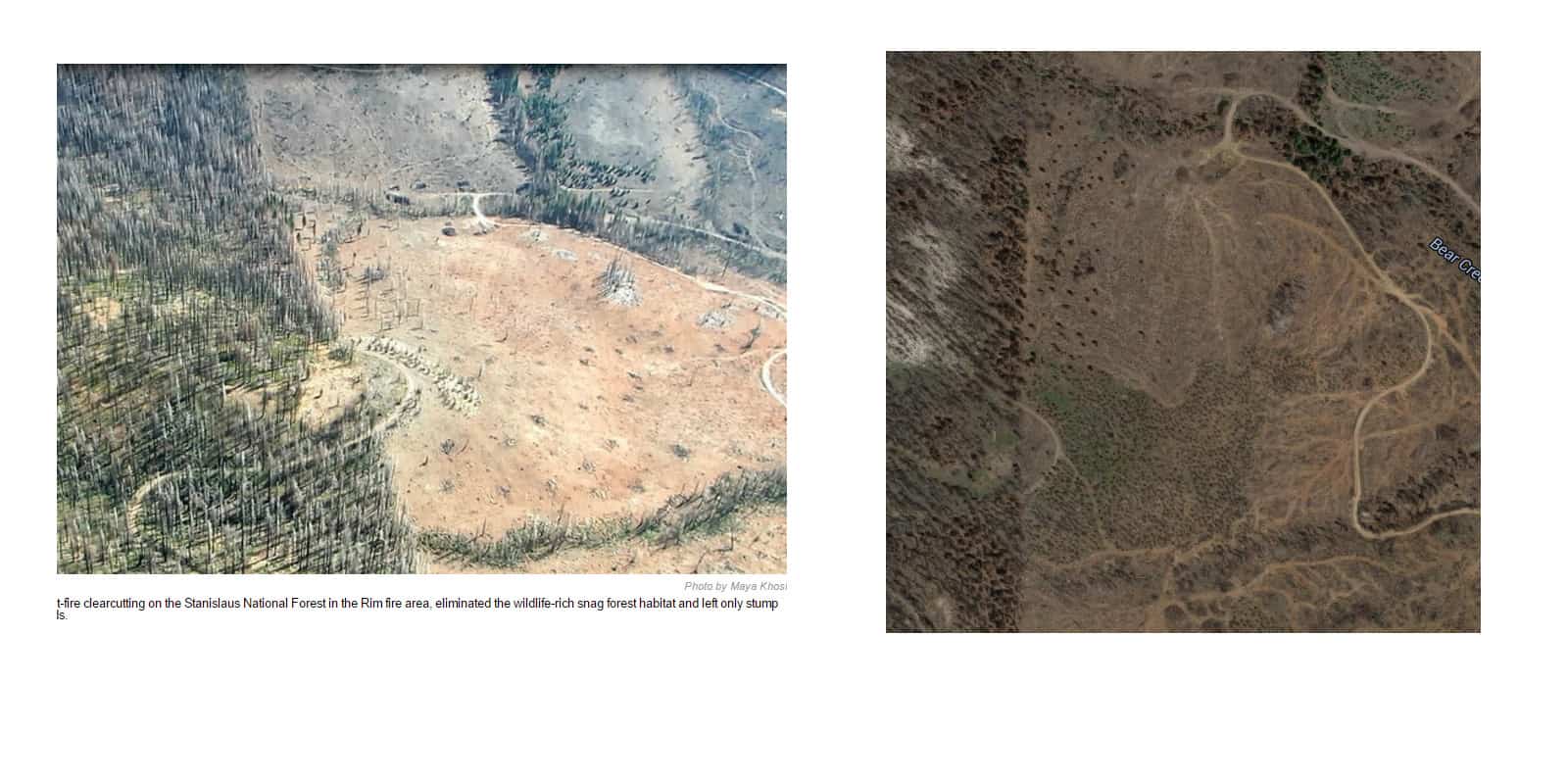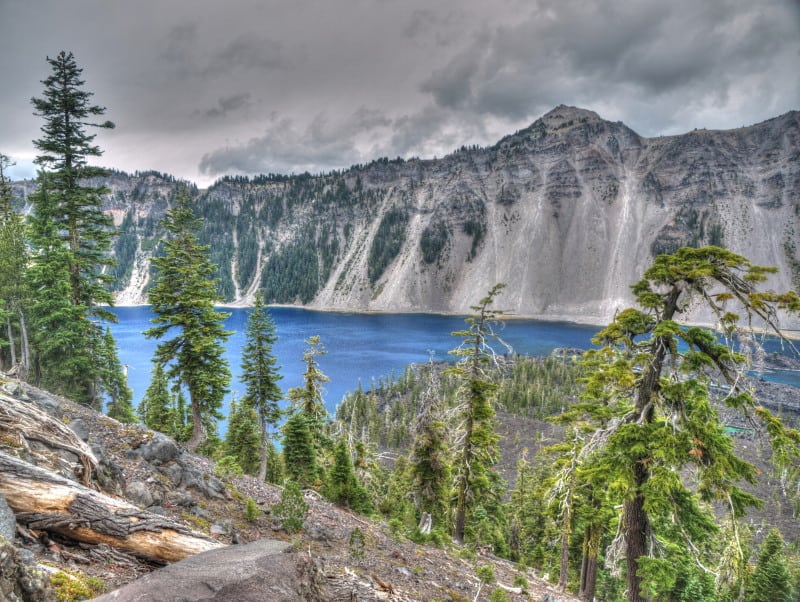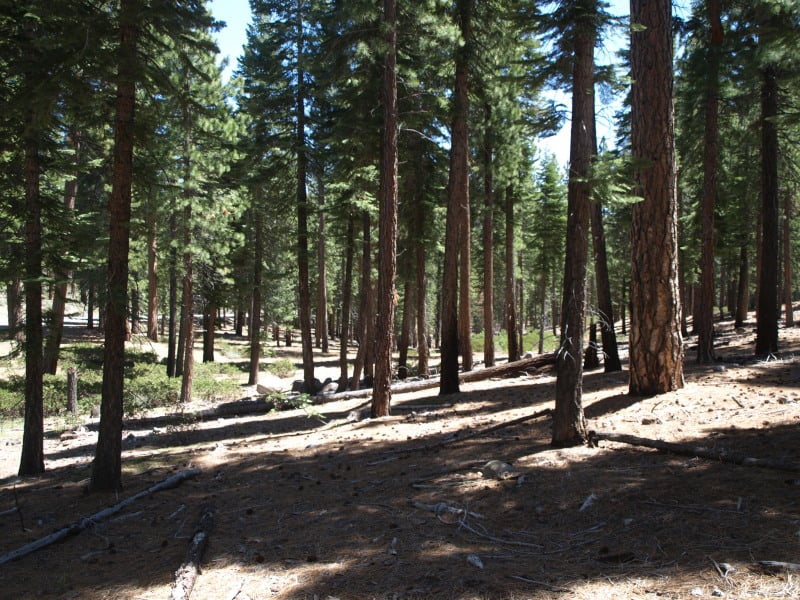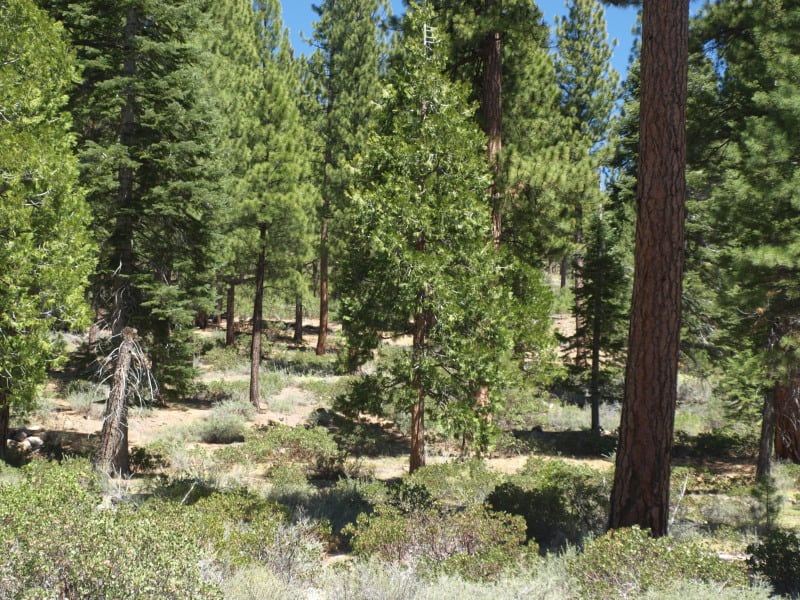“Use every damn tool you’ve got,” he said. “If we could have beavers on crack out there I’d be donating to that process — anything that will speed up the pace and scale of this thing.”
Dr. Malcolm North
Restoration
Sierra Nevada Logging Examples
Back in 2012, I worked my last season with the Forest Service, on the Amador Ranger District of the Eldorado National Forest. In particular, I led the crew in marking the cut trees in this overcrowded unit.
The above picture shows the partially logged unit, as well as the sizes of logs thinned.
This part of the same unit shows a finished portion, and two other log landings.
Here is a link to the larger view.
https://www.google.com/maps/@38.6022239,-120.3284245,1019a,35y,90h/data=!3m1!1e3?hl=en
There are also other completed cutting units in the area, which I worked in. Most of those were also cut in 2018, six years after they were marked. The existing plantations were cut back in the 80’s. At least one new goshawk nest was found, and the cutting unit was dropped.
New Study About Forests Impacted by Extreme Mortality
http://academic.oup.com/bioscience/advance-article/doi/10.1093/biosci/bix146/4797261
Massive tree mortality has occurred rapidly in frequent-fire-adapted forests of the Sierra Nevada, California. This mortality is a product of acute drought compounded by the long-established removal of a key ecosystem process: frequent, low- to moderate-intensity fire. The recent tree mortality has many implications for the future of these forests and the ecological goods and services they provide to society. Future wildfire hazard following this mortality can be generally characterized by decreased crown fire potential and increased surface fire intensity in the short to intermediate term. The scale of present tree mortality is so large that greater potential for “mass fire” exists in the coming decades, driven by the amount and continuity of dry, combustible, large woody material that could produce large, severe fires. For long-term adaptation to climate change, we highlight the importance of moving beyond triage of dead and dying trees to making “green” (live) forests more resilient.
What is Beyond the “Fog of War”?
There are scary and uncertain times ahead for our forests. There is just too much “Fog of War” going on for the public to sort out and fact-check for themselves. Even the ‘fact-checkers’ should be suspect, until proven reliable and bias-free. The rise of ‘fake news’ has blurred multiple lines, and many people, even in mass media, fall for the hoaxes, satire or misinformation. (Example: An article appeared on the Grist website, showing concern about a recall of “Dog Condoms”, presenting the link to www.dogcondoms.com )
We’re All In This Together

Howdy, Folks
I’m just going to drop this here. A side by side comparison of the land that some serial litigators insist is clear evidence of Forest Service salvage clearcutting in the Rim Fire. The caption reads, “Post-fire clearcutting on the Stanislaus National Forest in the Rim fire area, eliminated the wildlife-rich snag habitat and left only stump fields.” Where is the “wildlife-rich snag habitat” in that burned-over plantation on private land? The picture on the right is before logging started, from Google Maps.
Yes, the story is still up on their website, in all its slanderous glory.
Have a nice day!
Massive Crater Lake Wilderness Area Fantasy
Oregon Wild has proposed a massive half million acre Wilderness Area, partly to “protect” Crater Lake. The Klamath County Commissioners are saying no, with fears that summer fires would affect public health, and that those unhealthy forests need active management.
Here is a map of what Oregon Wild wants done.
Sleeping With the Enemy?
Timber industry people who don’t trust forest collaboration believe that those of us who participate in collaboratives are sleeping with the enemy. Environmentalists who would rather sue than participate in collaboratives think that environmentalists who collaborate with us are sleeping with the enemy. So it’s unanimous. We’re sleeping with our enemies. I don’t care what our critics think. Collaborative groups, ours included, are solving political problems that should never have become political problems, and those problems are the reason why our forests are dying and burning before our very eyes. So if you really want to know what collaboration is all about, it’s about protecting forests from the ravages of nature, not just for our benefit, but also for the benefit of future generations.
Duane Vaagen, Chief Executive Officer
Vaagen Brothers Lumber Company, Colville, Washington
http://www.evergreenmagazine.com/forest-collaboration-in-northeast-washington-part-1-duane-vaagen/
Larry’s note: Sent to me from a reader, this points out the, maybe, necessary mistrust at this part of the collaborative journey. We need all sides to embrace full transparency, so that the public at-large can more accurately form a better-educated opinion of the compromises that might work, for those site-specific conditions. I do think that the tables are turning, in favor of more active management and stewardship. I do think this summer’s fire season might convince a few more people, too.
Service Contract Re-visited
In my last adventure, I decided to pass through an area of the Tahoe National Forest, where I worked in 1996 and 1997. During that time, I worked on fire salvage, blowdown salvage, insect salvage and roadside hazard tree projects. There was also this Service Contract, which reduced fuels without cutting trees over 9.9″ dbh. The logger had three varied types of cutting machines, each of them with their strengths and limitations. He was a crusty old guy, who didn’t like the Federal “oversight” of his work.
I usually liked to change these loggers’ perception of what inspectors do. He wasn’t used to getting “written up” for doing good work but, he was still quite wary of me. I once caught him damaging the bark of a leave tree with his machine, then getting off it, and applying some dirt to the wound (to hide it). As he was getting back to his seat, he saw me. I gave him the “naughty, naughty” hand signal, and walked over there. I waited to see how he would react to getting caught. Surprisingly, he kind of hung his head, and was quiet, for once. So, I told him that there is an acceptable level of “damage” in this kind of work and he wasn’t anywhere near close to it, yet. I think our relationship changed, a little, after that agreement.
One of the keys to success was the ability to do a cool prescribed burn. All too often, fuels are still too thick and the burn is a bit hotter than the residual trees can stand. In this case, the firefighters did well in achieving a nice, cool and effective burn. On the west-facing slopes, the brush has grown back, somewhat. That is to be expected, and will continue, until it is shaded out.
As far as resilience to fire and drought, it is pretty clear that the spacing is very good. The brush looks like it can be burned safely, on a regular basis. The pines also seem to be quite healthy and vigorous. Keep in mind, this area along Highway 89, in the eastside pine zone, is in a rainshadow east of the Sierra Nevada Crest. There are some western junipers up on the ridgetop, and the Nevada desert is 15 miles away.
